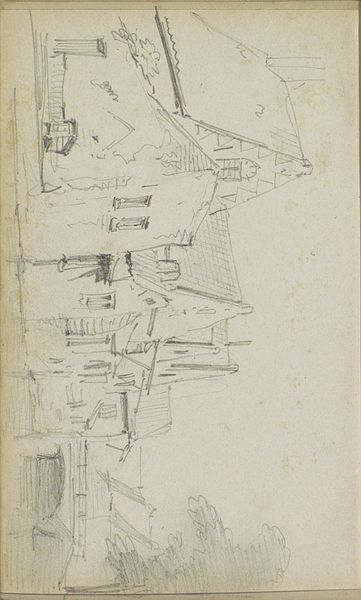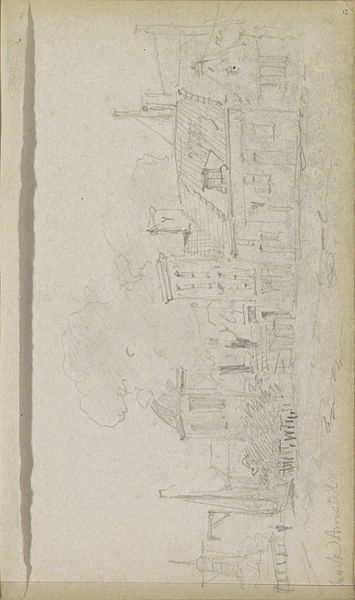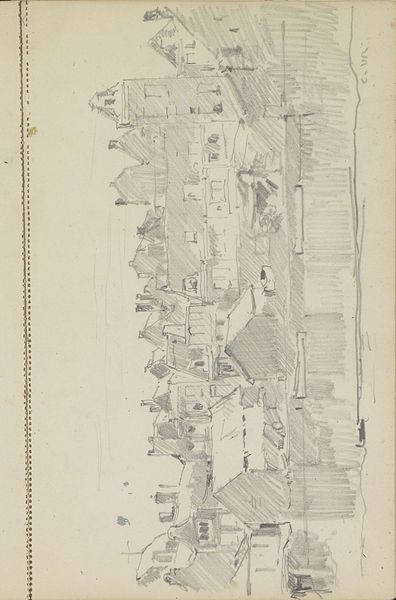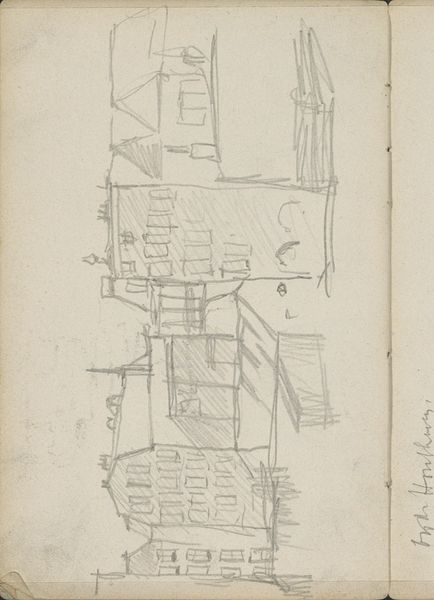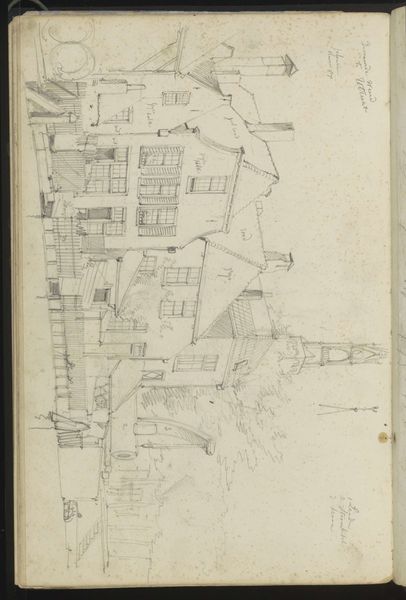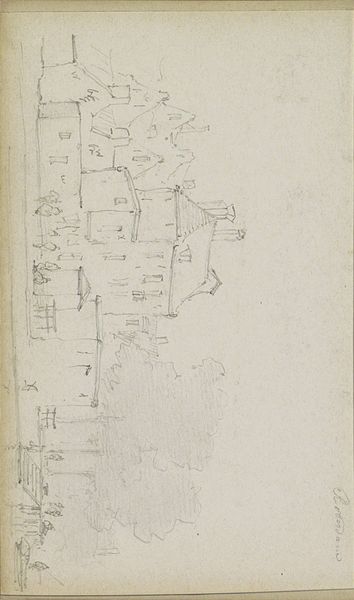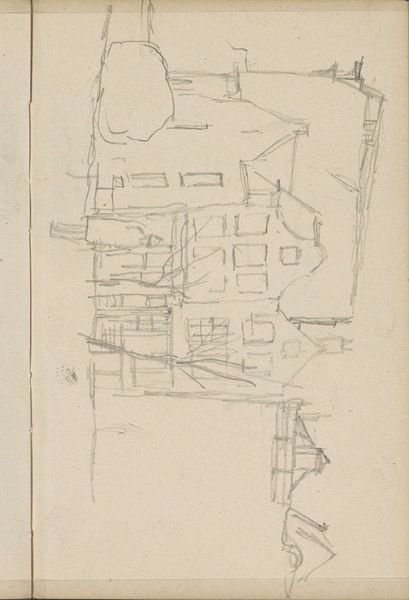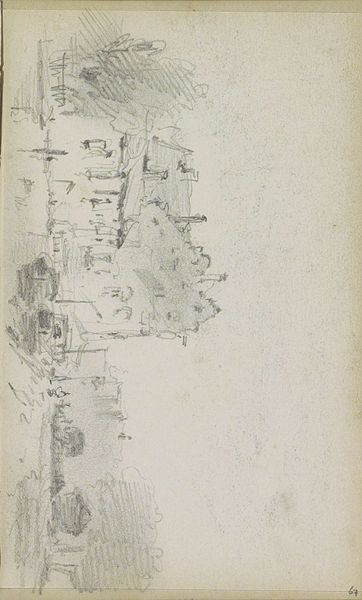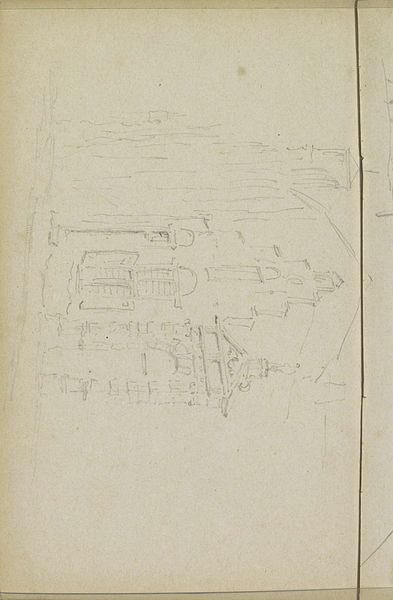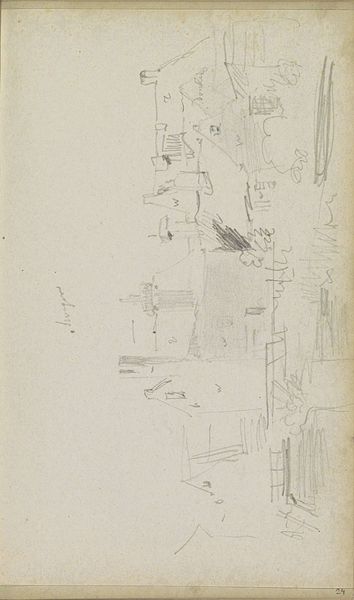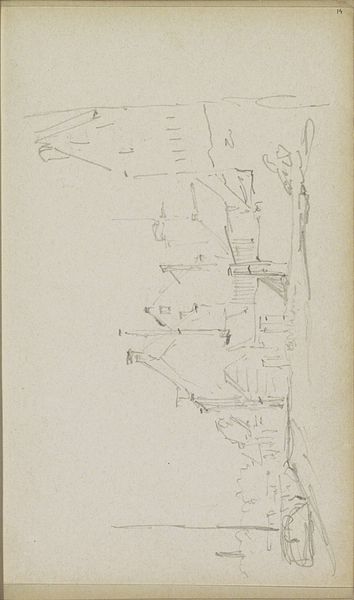
drawing, paper, pencil
#
drawing
#
paper
#
pencil
#
cityscape
#
street
#
realism
Copyright: Rijks Museum: Open Domain
Editor: Here we have Adrianus Eversen's pencil drawing, "Gezicht op een straat," created sometime between 1828 and 1897. It feels incredibly raw, like a fleeting observation captured quickly. I’m curious, what aspects of this drawing strike you most? Curator: Well, for me, the incompleteness is key. It reminds us that so much of 19th-century Dutch urban life went unrecorded in the fine arts. We see polished cityscapes, sure, but this...this feels like a glimpse behind the curtain. What story does the drawing seem to tell? What is excluded from typical picturesque depictions of Dutch streets that's present here? Editor: I guess the lack of people. Street scenes are usually bustling. This is stark, almost desolate, emphasizing the architecture rather than human activity. Is that a reflection of the period? A changing view of urban space perhaps? Curator: Precisely. The absence is the point. By focusing on the bare structures, Eversen highlights the socio-economic forces shaping the city. Think about industrialization, migration patterns. This isn't a celebratory portrayal, it’s a document, and it forces us to consider who is missing and why. How does this contribute to or deviate from the expectations about what street art *should* represent at this time? Editor: That gives it a new layer. I was seeing it as simply unfinished, but framing it within social change…the emptiness is now loaded with meaning. The drawing is no longer *just* a study; it reflects something unsaid about Dutch society. Curator: Exactly. And think about its exhibition history. Was it meant for public consumption at all? The intimate medium suggests a more private contemplation, furthering this idea that it is more document than declaration. I have to admit I hadn't appreciated how complex this seemingly simple sketch really is before.
Comments
No comments
Be the first to comment and join the conversation on the ultimate creative platform.
